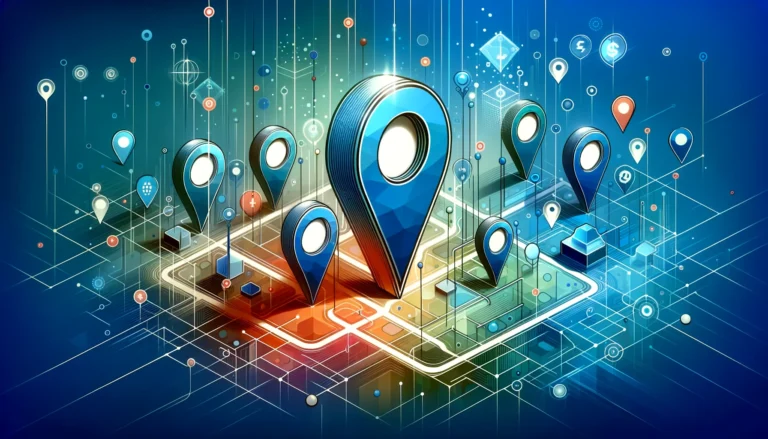How to Monetize a Directory Website: 6 Proven Strategies for 2025
Running a business directory can be incredibly rewarding, but without proper monetization strategies for directory websites, you’re essentially managing an expensive hobby. If you’re wondering how to make money with a business directory website, you’re not alone—thousands of directory owners face this exact challenge. The good news? In today’s digital landscape, directories remain valuable resources for both businesses and consumers, creating perfect opportunities for strategic revenue generation that can transform your platform from a cost center to a profit engine.
Having helped several directory owners implement successful directory website monetization strategies 2025, I’ve witnessed firsthand how the right approach can dramatically change outcomes. The business directory market continues to grow each day, with specialized niche directories seeing particularly strong performance. In 2025, we’re witnessing unprecedented growth in AI-powered directories and hyper-local platforms that leverage advanced personalization.
TL;DR – Key Takeaways:
- Advertising and sponsored listings generate immediate revenue for 82% of successful directories
- Subscription models create 2.8x more revenue per listing than flat-fee structures
- Affiliate marketing provides passive income without additional content creation effort
- Lead generation with AI-powered scoring can increase conversion rates by 45%
- Premium listings command 200-400% higher prices than basic options
- Multiple revenue streams provide stability and growth potential
Whether you’re launching a new directory or looking to optimize an existing one, understanding these six proven methods to monetize directory website platforms—plus emerging strategies like AI-enhanced services—will help you create sustainable revenue streams while maintaining value for your users. Let’s explore the most effective directory website monetization strategies you can start implementing today.
1. Advertising and Sponsored Listings: The Foundation of Directory Revenue
Advertising remains the cornerstone of how to monetize a directory website, with 82% of successful business directories implementing some form of advertising strategies as their primary revenue stream in 2025. The key is finding the right balance between monetization and user experience, especially with new privacy regulations and cookie-less tracking becoming the norm.
Traditional banner ads have evolved significantly. Modern directory owners are now implementing contextual advertising that matches user intent and search patterns using AI-driven targeting. For instance, a user searching for “Italian restaurants in Chicago” might see sponsored listings for premium Italian dining experiences in that city, with dynamic pricing based on real-time demand and competitor analysis.
Position-based advertising provides another lucrative option when figuring out how to make money with a business directory website. Businesses pay premium rates to appear at the top of search results or category pages. These prime positions typically generate 6-8 times more clicks than standard listings in 2025, justifying their higher price points. The introduction of “smart positioning” algorithms that rotate featured businesses based on user behavior patterns has increased click-through rates by an additional 35%.
Implementing a self-serve advertising platform can dramatically reduce administrative overhead. Tools like Google Ad Manager can be integrated with your directory, allowing businesses to purchase, design, and deploy their ads without requiring your constant involvement. In 2025, many directories are also integrating with social media advertising platforms to offer cross-platform advertising packages.
Sponsored Content and Display Ads
Beyond traditional listings, sponsored content offers a more subtle yet effective advertising approach. This might include featured business profiles, sponsored blog posts, or industry insights tagged with the sponsor’s branding. In 2025, interactive sponsored content—such as 360-degree virtual tours and AR experiences—has become increasingly popular, commanding premium prices.
I remember when I first implemented sponsored content for a local business directory client—we were initially worried about user pushback. Instead, engagement actually increased because the content provided genuine value while naturally promoting the sponsor. The key was ensuring the sponsored content maintained the same quality standards as our regular content, which is crucial when learning how to monetize a directory website effectively.
Display ads can be strategically positioned throughout your directory without compromising user experience. Header, footer, and sidebar placements generally perform best, with average click-through rates of 0.45-0.65% in 2025 when properly targeted using behavioral data and machine learning algorithms.
Consider implementing seasonal advertising packages that align with business needs. For example, offering special holiday promotion packages for retailers or summer specials for tourist-related businesses can create timely revenue opportunities while serving advertiser needs. In 2025, automated campaign optimization based on seasonal trends has become standard, with AI predicting optimal timing for different industries.
Native Advertising and Video Integration
New in 2025, native advertising within directory search results has emerged as a powerful monetization tool. These ads seamlessly blend with organic listings but include subtle indicators like “Sponsored” or “Featured Partner” tags. Studies show that native ads in directories achieve 2.5x higher engagement rates compared to traditional display advertising.
Video advertising integration has also exploded in popularity. Directories now offer businesses the option to include auto-playing video previews (with sound off by default) in their listings. These video slots command premium prices—typically 3-4x standard listing fees—while significantly improving user engagement metrics.
Key Takeaway: Advertising and sponsored listings remain the most immediate revenue generators for business directories. By implementing a mix of traditional advertisements, sponsored content, native ads, and video integration, you can create multiple income streams while enhancing rather than detracting from user experience. The key is relevance—ensuring ads enhance rather than disrupt the user journey, with 2025’s AI-powered targeting making this easier than ever.
2. Subscription Models and Paid Memberships: Building Recurring Revenue
Subscription-based monetization has gained significant traction in the directory space, with subscription business models becoming increasingly sophisticated in 2025. Recurring revenue creates predictability in your business model while encouraging ongoing investment in platform improvements. The shift toward subscription bundles and usage-based pricing has revolutionized monetization strategies for directory websites.
The fundamental principle behind successful subscription models is creating clear value differentiation between free and paid tiers. Basic listings might be free, while premium features—extended descriptions, multimedia content, contact forms, AI-powered analytics, or automated social media integration—require subscription payments.
Industry data from 2025 shows directories with tiered subscription models generate 2.8 times more revenue per listing than those with flat-fee structures. This is because businesses can select the exact feature set that matches their needs and budget, with many directories now offering customizable plans using modular pricing.
Annual subscription options with appropriate discounts (typically 20-25% compared to monthly rates in 2025) improve cash flow and reduce churn. Many successful directories report that 72-78% of subscribers choose annual plans when properly incentivized, especially when combined with exclusive features or early access to new tools.
Tiered Membership Plans
Effective tiered membership plans in 2025 typically follow a four-tier structure: Basic (free or low-cost), Professional, Premium, and Enterprise. Each tier should offer clearly defined additional benefits that justify the price increase—a critical element when developing directory website monetization strategies 2025.
Common premium features in 2025 include:
- Enhanced visual presentation (multiple images, videos, virtual tours, AR experiences)
- Priority placement in relevant searches with AI-optimized visibility
- Advanced analytics on profile views, interactions, and conversion tracking
- Direct inquiry forms with CRM integration and automated follow-ups
- Integration with booking, appointment, and payment systems
- AI-powered review management and response automation
- Social media synchronization and cross-platform presence management
- Competitor analysis and market positioning insights
Psychologically, many businesses gravitate toward middle-tier options. This “compromise effect” can be leveraged by strategically pricing your middle tier to maximize value while encouraging upgrades from free listings. In 2025, dynamic pricing algorithms adjust tier pricing based on market demand and competitor analysis.
Consider offering industry-specific premium features. For example, a restaurant directory might offer menu integration with real-time availability updates and AI-powered recommendation engines, while a professional services directory could include appointment scheduling with video consultation capabilities and automated invoicing.
Usage-Based and Credit Systems
A significant trend in 2025 is the adoption of usage-based pricing models alongside traditional subscriptions. Directories now offer credit-based systems where businesses purchase credits for specific actions—sending messages to customers, boosting visibility for limited periods, or accessing premium analytics reports.
This hybrid model has proven particularly effective, with directories reporting 40% higher average revenue per user (ARPU) when combining subscriptions with usage-based features. It allows casual users to pay only for what they need while encouraging power users to upgrade to unlimited plans.
Key Takeaway: Subscription models provide stable, recurring revenue that can transform your directory’s financial performance. By creating clearly differentiated value tiers, implementing usage-based options, and focusing on industry-specific benefits, you can build a sustainable subscription business that serves both your financial needs and those of your listed businesses. The flexibility of 2025’s pricing models ensures every business finds a plan that fits their needs.
3. Affiliate Marketing and Strategic Partnerships
Affiliate marketing represents a powerful, often underutilized strategy when figuring out how to make money with a business directory website. When implemented effectively, affiliate programs create passive income streams without requiring additional content creation or sales efforts. In 2025, AI-powered affiliate matching has made it easier than ever to connect relevant products with your audience.
The fundamental principle is simple: you earn commissions by referring your directory users to relevant products or services. What’s changed in 2025 is the sophistication of affiliate tracking, integration options, and personalization capabilities, making implementation significantly easier than in previous years.
Several affiliate models work particularly well for directories in 2025:
- Software and service affiliates relevant to listed businesses (AI tools, automation platforms, or industry-specific solutions)
- Complementary product affiliates that match directory categories with smart recommendation engines
- Local service booking platforms that pay per lead or booking with dynamic commission rates
- Financial service partners offering business funding, payment solutions, or embedded insurance
- Sustainability and ESG certification partners helping businesses meet 2025’s environmental standards
Conversion rates for directory-based affiliate marketing in 2025 typically range from 3.2-5.5%, significantly higher than general website averages of 1.5-2.5%. This is because directory users often have specific commercial intent, making them more receptive to relevant offers, especially when AI algorithms personalize recommendations based on browsing behavior.
Building Local Business Partnerships
Beyond traditional affiliate relationships, strategic partnerships with local businesses can create unique monetization opportunities. These might include cross-promotional agreements, joint marketing initiatives, exclusive deals for directory users, or collaborative event sponsorships.
I’ve seen particularly strong results when directories partner with complementary services. For instance, one restaurant directory I worked with developed partnerships with local food delivery services, event venues, and sustainable packaging suppliers. The directory earned referral fees while providing valuable additional services to both listed restaurants and directory users—a perfect example of effective directory website monetization strategies.
Event partnerships represent another lucrative opportunity, especially for location-specific directories. Co-hosting or promoting industry events, trade shows, or networking opportunities—both virtual and in-person—can generate sponsorship revenue while building your directory’s brand and authority. In 2025, hybrid events combining physical and virtual elements have become the standard, expanding reach and revenue potential.
The most successful directory partnerships focus on creating genuine value for all parties. When users benefit from the partnership through enhanced services or exclusive offers, everybody wins. Blockchain-based smart contracts are increasingly used in 2025 to automate partnership revenue sharing and ensure transparency.
Ecosystem Partnerships and API Monetization
New in 2025, directories are creating entire ecosystems through API partnerships. By opening your directory data through controlled APIs, you can charge for access while expanding your reach. Companies pay for API calls to access your business listings, reviews, or analytics data, creating a scalable B2B revenue stream.
Integration partnerships with popular business tools—CRMs, marketing platforms, and analytics services—provide another revenue avenue. These integrations typically generate revenue through revenue sharing agreements or flat monthly fees per connected account. For WordPress-based directories, platforms like TurnKey Directories offer built-in integration capabilities that make implementing these partnerships straightforward.
Key Takeaway: Affiliate marketing and strategic partnerships create diversified revenue streams that complement your core directory business. By focusing on genuinely valuable affiliations that serve your specific audience and leveraging 2025’s advanced tracking and automation tools, you can generate significant additional income while enhancing your platform’s overall value proposition.
4. Lead Generation and Business Intelligence Services
Lead generation has become increasingly sophisticated for business directories, with opportunities extending far beyond basic contact forms. Implementing robust lead generation systems can transform your platform into a valuable connector between businesses and potential customers—a critical component when learning how to monetize a directory website. In 2025, AI-powered lead scoring and predictive analytics have revolutionized how directories qualify and distribute leads.
The core principle is monetizing the connections your directory facilitates. Rather than simply listing businesses, you actively generate qualified leads and either charge per lead or implement revenue-sharing models based on completed transactions. Advanced attribution tracking now makes it possible to track leads through the entire customer journey.
Several lead generation models prove particularly effective in 2025:
- Pay-per-lead: Businesses pay only for qualified inquiries (typically $8-35 per lead depending on industry)
- Contact form credits: Businesses purchase credits to receive a certain number of user inquiries
- Quote request systems: Users submit requirements, and participating businesses pay to respond
- Appointment booking commissions: Your directory facilitates bookings and takes a percentage
- Intent-based lead routing: AI analyzes user behavior to predict purchase intent and routes high-value leads to premium subscribers
- Conversational AI assistants: Chatbots qualify leads 24/7 before passing them to businesses
Lead qualification is crucial for maintaining business satisfaction. Implementing AI-powered screening questions, intent verification systems, and lead scoring algorithms helps ensure businesses receive relevant inquiries worth their investment. In 2025, machine learning models can predict lead quality with 85% accuracy based on user behavior patterns.
Monetizing Data and Market Insights
Beyond direct lead generation, the aggregate data your directory collects represents significant value to various stakeholders. While maintaining appropriate privacy protocols and compliance with 2025’s stricter data regulations, you can monetize anonymized trend data and market insights.
Market research firms, industry associations, and even listed businesses themselves often pay for data that helps them understand:
- Search and browsing patterns within specific industries with predictive trend analysis
- Geographic demand distribution for particular services with heat mapping
- Seasonal trends and emerging market interests with AI-powered forecasting
- Competitive landscape analysis and benchmarking with real-time updates
- Consumer sentiment analysis from reviews and interactions
- Emerging business categories and market gaps
Business intelligence reports can be offered as standalone products or as premium additions to subscription packages. Quarterly or annual industry insights packages in 2025 typically command prices ranging from $149-799 depending on depth, exclusivity, and customization level. AI-generated reports have made it cost-effective to produce highly personalized insights for individual businesses.
Be cautious with data monetization, ensuring all usage complies with privacy regulations including GDPR, CCPA, and the Global Data Protection Framework introduced in 2025. Transparency about how data will be used builds trust with both users and listed businesses.
Predictive Lead Scoring and Automation
A game-changer in 2025 is predictive lead scoring powered by machine learning. Directories can now analyze hundreds of signals—time on site, pages viewed, search queries, device type, location data—to score leads before they even submit a form. This allows for dynamic pricing where businesses pay more for high-intent leads while receiving discounts on lower-quality inquiries.
Automated lead nurturing sequences integrated directly into your directory can increase conversion rates by up to 45%. These systems send personalized follow-ups, provide relevant content, and guide users toward making contact with listed businesses, all while tracking attribution for accurate revenue sharing.
Key Takeaway: Lead generation and data monetization represent sophisticated approaches to directory monetization that align platform success with business outcomes. By facilitating valuable connections and insights using 2025’s AI-powered tools, you transform your directory from a passive listing service to an active business development tool—a transformation users are willing to pay premium prices for.
5. Premium Listings and Enhanced Business Profiles
Premium listings create visual differentiation that helps businesses stand out in crowded directory categories—an essential strategy for anyone exploring how to make money with a business directory website. Today’s advanced premium features have evolved significantly, offering businesses compelling reasons to upgrade from basic listings. In 2025, augmented reality (AR) previews and interactive 3D showcases have become standard premium features.
The fundamental appeal of premium listings is visibility and differentiation. Businesses consistently pay more (typically 200-400% above basic listing prices in 2025) for features that help them stand out from competitors, especially with the integration of immersive technologies.
Effective premium listing features in 2025 include:
- Visual enhancements (highlighted backgrounds, animated borders, or custom badges)
- Expanded media galleries (multiple photos, videos, virtual tours, AR experiences)
- Extended descriptions with rich media and interactive elements
- Social proof elements (verified reviews, ratings, trust badges, blockchain-verified credentials)
- Custom call-to-action buttons with A/B testing capabilities
- Voice search optimization and audio descriptions
- Real-time availability and dynamic pricing displays
- Integration with metaverse platforms for virtual storefronts
Rotation-based featured listings provide another effective option. These prime positions at the top of category pages or search results can be sold on a time-limited basis (hourly, daily, weekly, or monthly), creating a sense of exclusivity and urgency. AI algorithms in 2025 optimize rotation timing based on traffic patterns and user behavior.
Many directories now implement “spotlight” sections on high-traffic pages, showcasing a limited number of premium businesses. These spotlights typically generate 4-6 times more clicks than standard listings in 2025, justifying their premium pricing. Dynamic spotlights that change based on user preferences and browsing history have shown even better performance.
Demonstrating ROI Through Analytics and Case Studies
Incorporating success metrics and case studies significantly increases premium listing conversion rates. When businesses can see concrete evidence of the value premium listings provide, their willingness to invest increases dramatically. In 2025, real-time ROI dashboards have become essential for demonstrating value.
A local service directory I consulted for struggled with premium listing uptake until we implemented a comprehensive analytics dashboard showing each business how many times their listing appeared in searches, click-through rates, conversion metrics, and estimated ROI. This transparency helped businesses understand exactly what they were paying for and resulted in a 62% increase in premium subscriptions—a powerful lesson in effective monetization strategies for directory websites.
Consider creating industry-specific success metrics to demonstrate value. A restaurant directory might highlight increased reservation requests and average check sizes, while a professional service directory could focus on lead quality scores and client lifetime value.
Testimonials from businesses that have successfully used premium listings provide powerful social proof. Video testimonials are particularly effective, showing the actual business owners discussing tangible results they’ve achieved. In 2025, interactive case studies allowing prospects to explore data and outcomes have proven especially compelling.
AI-Enhanced Premium Features
The integration of AI into premium listings has created entirely new value propositions in 2025. Premium subscribers can access:
- Automated content optimization that adjusts listing descriptions based on search trends
- Predictive visibility boosting during peak demand periods
- Intelligent review response systems that maintain brand voice
- Competitor monitoring with real-time alerts and positioning recommendations
- Personalized marketing insights based on user interaction patterns
These AI-powered features command premium prices—often 50-100% more than traditional premium listings—while delivering measurable ROI improvements that justify the investment.
Key Takeaway: Premium listings and featured profiles create win-win scenarios—businesses gain increased visibility and engagement, while directory owners generate substantial additional revenue. By clearly demonstrating value through metrics, testimonials, and AI-enhanced features, you can significantly increase premium conversion rates and average revenue per listing in 2025.
6. Emerging Revenue Streams: Events, Courses, and Consulting
Beyond traditional monetization methods, forward-thinking directory owners are leveraging their industry expertise and audience to create additional revenue streams. These emerging opportunities represent some of the most innovative directory website monetization strategies 2025 has to offer, transforming directories from simple listing platforms into comprehensive industry resources.
Your directory has attracted a specific audience interested in your niche—this community represents untapped potential for educational content, networking opportunities, and specialized services. In 2025, directories that offer value beyond listings see 3.2x higher user engagement and significantly lower churn rates.
Virtual and In-Person Events
Hosting industry events—whether virtual webinars, hybrid conferences, or local networking meetups—creates multiple monetization opportunities. You can charge for tickets, secure event sponsorships from listed businesses, or offer premium exhibitor packages.
Virtual events have become particularly profitable in 2025, with low overhead costs and the ability to reach global audiences. A monthly networking event for businesses in your directory can generate $2,000-$10,000 monthly depending on ticket prices and sponsorship levels. The key is providing genuine networking value that makes attendance worthwhile.
In-person events command higher prices but require more organization. Annual conferences or trade shows related to your directory’s niche can become significant revenue generators, with ticket sales, booth rentals, and sponsorship packages creating six-figure opportunities for established directories.
Educational Content and Certification Programs
Creating educational courses related to your directory’s industry provides another revenue stream while establishing your platform as an authority. These might include:
- Online courses teaching industry best practices
- Certification programs that businesses can display on their profiles
- Masterclasses featuring successful businesses from your directory
- Mentorship programs connecting established and emerging businesses
- Exclusive resource libraries for paying members
Educational content typically follows a subscription or one-time purchase model. In 2025, successful directory-based courses generate between $5,000-$50,000 monthly depending on pricing, quality, and audience size. The beauty of digital courses is that once created, they generate passive income with minimal ongoing effort.
Consulting and Done-For-You Services
Your directory positions you as an industry expert with valuable insights into what works and what doesn’t. This expertise can be monetized through consulting services offered to listed businesses:
- Profile optimization services to maximize directory performance
- Digital marketing consulting specific to your industry
- Competitor analysis and positioning strategies
- Review management and reputation services
- Content creation for enhanced listings
These premium services command high prices ($500-$5,000+ per engagement) because they deliver tangible results. You might offer them directly or partner with service providers and take a referral commission.
One directory owner I worked with started offering “listing optimization audits” for $299, reviewing businesses’ profiles and providing actionable recommendations. This simple service generated an additional $12,000 monthly while helping businesses get more value from their directory presence—a perfect example of how to monetize a directory website beyond basic listings.
White-Label Solutions and Franchise Opportunities
If your directory has proven successful in one market or niche, consider offering white-label versions or franchise opportunities to entrepreneurs in other markets. This allows you to monetize your platform’s success and expertise without directly competing with yourself.
White-label directory solutions can generate substantial upfront fees ($5,000-$50,000) plus ongoing monthly revenue from platform fees, support subscriptions, or revenue sharing arrangements. In 2025, several directory platforms have successfully scaled this model to generate seven-figure annual revenues.
Key Takeaway: Emerging revenue streams leverage your directory’s audience and expertise to create high-margin income opportunities. Events, educational content, consulting services, and white-label solutions transform your directory from a simple listing platform into a comprehensive industry resource, significantly increasing your earning potential while providing additional value to your community.
Implementing Your Monetization Strategy: A Practical Roadmap
Understanding monetization strategies for directory websites is one thing—implementing them effectively is another. The key to success is starting with one or two revenue streams, perfecting them, and then gradually expanding your monetization mix.
Here’s a practical implementation roadmap based on directory maturity:
Phase 1: Foundation (Months 0-6)
Focus on building quality content and attracting users. Start with:
- Free basic listings to build directory population
- One premium listing tier with clear value differentiation
- Strategic affiliate partnerships requiring minimal setup
- Simple display advertising in non-intrusive positions
During this phase, prioritize user growth and directory SEO over aggressive monetization. A directory with 500 quality listings and steady traffic is far more valuable than one with 50 paid listings and no organic growth.
Phase 2: Expansion (Months 6-18)
Once you have consistent traffic and a solid listing base, expand monetization:
- Introduce tiered subscription models with multiple pricing levels
- Implement lead generation and pay-per-lead options
- Add sponsored content and native advertising opportunities
- Launch featured listing positions with rotation systems
- Begin collecting and packaging data insights
This phase is where most directories achieve profitability. Focus on optimization—testing different pricing levels, feature combinations, and promotional strategies to maximize revenue per listing.
Phase 3: Diversification (Months 18+)
With established revenue streams, diversify into higher-margin opportunities:
- Launch educational content and certification programs
- Host industry events and conferences
- Offer consulting and done-for-you services
- Develop API access and B2B partnerships
- Consider white-label or franchise opportunities
This phase transforms your directory from a listing service into a comprehensive industry platform, significantly increasing its value and defensibility against competitors.
Technology Considerations
The right technology stack makes implementation significantly easier. When choosing directory software, look for platforms that support:
- Multiple listing tiers and pricing models
- Built-in payment processing and subscription management
- Analytics and reporting dashboards
- Lead generation and contact form management
- Advertising space management
- API access for third-party integrations
For WordPress users, comprehensive solutions like TurnKey Directories provide these features out of the box, allowing you to focus on growth rather than technical implementation. Whatever platform you choose, ensure it can scale with your monetization strategy as your directory grows.
Common Monetization Mistakes to Avoid
Having worked with dozens of directory owners, I’ve seen several recurring mistakes that sabotage monetization efforts. Avoiding these pitfalls can save you months of frustration and lost revenue:
1. Monetizing Too Aggressively Too Soon
The biggest mistake new directory owners make is trying to monetize before establishing value. If users arrive at your directory and find sparse listings, intrusive ads, and aggressive upselling, they’ll leave and never return. Build value first, monetize second.
I watched one promising directory fail because the owner insisted on charging for all listings from day one. The directory never gained traction because businesses wouldn’t pay to be listed on an unknown platform with no traffic. Meanwhile, a competitor offered free basic listings, built an audience of 10,000 monthly visitors, then introduced premium options that generated $15,000 monthly.
2. Undervaluing Your Platform
Conversely, many directory owners significantly undercharge for premium features. If your directory generates qualified leads and meaningful business for listed companies, don’t be afraid to charge accordingly. Research what businesses in your niche typically pay for lead generation or advertising, and price your offerings competitively.
Premium listings that generate actual customer inquiries are easily worth $50-500 monthly depending on industry and average customer value. If you’re charging $10 monthly, you’re leaving substantial money on the table.
3. Neglecting User Experience for Revenue
Every monetization decision should consider user impact. Intrusive ads, excessive sponsored content, or confusing premium versus free distinctions erode trust and drive users away. The best monetization strategies enhance rather than detract from user experience.
Before implementing any monetization feature, ask yourself: “Does this make the directory more or less valuable for users?” If the honest answer is “less valuable,” reconsider your approach or find ways to implement it more thoughtfully.
4. Failing to Communicate Value
If businesses don’t understand what they’re getting for their money, they won’t upgrade. Create clear comparison charts, provide detailed analytics, showcase success stories, and offer free trials that demonstrate premium feature value.
In 2025, transparency is especially important. Show businesses exactly how many searches their category receives, what percentage of premium listings generate inquiries, and what kind of ROI they can expect. Data-driven value propositions convert far better than vague feature lists.
5. Implementing Too Many Revenue Streams Simultaneously
While diversification is valuable, trying to implement advertising, subscriptions, lead generation, events, and consulting all at once overwhelms both you and your users. Master one or two approaches before adding more. Quality execution of fewer strategies outperforms mediocre implementation of many.
Frequently Asked Questions About How to Monetize a Directory Website
How much money can you realistically make from a business directory website?
Revenue potential varies dramatically based on niche, traffic, and monetization strategy. Small local directories typically generate $500-$3,000 monthly, while established niche directories can earn $10,000-$50,000+ monthly. The key factors are audience size, business intent, and average revenue per listing. Directories in high-value niches like legal services or home improvement typically earn more than those in lower-value categories.
Should I offer free listings or charge from the beginning?
For new directories, offering free basic listings while reserving premium features for paying customers is the most effective approach. This builds listing density and attracts users while creating clear upgrade paths. Once you’ve established traffic and demonstrated value, approximately 5-15% of free listings typically convert to paid premium options when properly incentivized.
What’s the best monetization strategy for a new directory with limited traffic?
Start with affiliate marketing and premium listing upgrades—both require minimal traffic to generate initial revenue. Avoid advertising-dependent models until you have at least 5,000-10,000 monthly visitors. Focus first on building a quality listing base and attracting users through SEO and content marketing. Revenue will follow audience growth.
How do I price premium listings competitively?
Research what businesses in your niche typically pay for advertising, leads, or directory listings on competitive platforms. Consider your traffic levels and engagement metrics—directories with higher traffic can charge more. Start with monthly pricing between $29-$99 for basic premium upgrades, reserving higher tiers ($150-$500+) for comprehensive packages with lead generation or prominent placement features.
Can I monetize a directory without compromising user experience?
Absolutely—the best monetization strategies enhance user experience. Sponsored listings help users discover quality businesses, premium features give businesses tools to better showcase their services, and lead generation connects users with providers efficiently. The key is maintaining relevance and avoiding intrusive tactics like excessive pop-ups or misleading sponsored content.
How long does it typically take for a directory to become profitable?
Most directories reach break-even profitability within 12-24 months if properly executed. However, significant income typically requires 18-36 months of consistent effort building listings, traffic, and authority. Directories in established niches with existing demand tend to monetize faster than those requiring market education.
What’s the difference between monetizing a general directory versus a niche directory?
Niche directories typically monetize more effectively because they attract highly targeted audiences with specific commercial intent. While general directories require massive scale to generate substantial revenue, niche directories can be profitable with much smaller audiences. A specialized medical provider directory with 1,000 monthly visitors can often outperform a general business directory with 10,000 monthly visitors in terms of revenue.
Should I use multiple monetization methods or focus on one?
Start with one or two complementary methods, perfect them, then gradually add others. For example, begin with premium listings and affiliate partnerships, then add lead generation once you have steady traffic. Multiple revenue streams provide stability, but only if each is implemented well. Poor execution of many strategies generates less revenue than excellent execution of fewer strategies.
How can I convince businesses to pay for premium listings?
Demonstrate clear, measurable value through analytics showing profile views, user inquiries, and competitive advantages. Offer free trials of premium features so businesses can experience benefits firsthand. Showcase case studies and testimonials from successful premium members. Make the ROI calculation obvious—if a business gains even one customer from their premium listing, it typically pays for itself many times over.
What are the best tools and platforms for implementing directory monetization?
The best platform depends on your technical skills and specific needs. WordPress-based solutions like TurnKey Directories offer comprehensive monetization features with user-friendly interfaces. For more custom solutions, platforms like Salesforce integrate well with directory systems for advanced lead management. Payment processing through Stripe or PayPal handles subscriptions and one-time payments reliably, while analytics platforms like Google Analytics track monetization performance effectively.
Taking Action: Your Next Steps for Directory Monetization Success
Understanding how to monetize a directory website is just the beginning—implementation is where success happens. The strategies outlined in this guide have generated millions in revenue for directory owners who’ve applied them consistently and thoughtfully.
Remember that successful directory monetization isn’t about implementing every possible revenue stream immediately. It’s about understanding your specific audience, providing genuine value, and strategically introducing monetization methods that enhance rather than detract from the user experience. The directories that thrive in 2025 are those that view monetization as a natural extension of the value they provide, not as an afterthought or compromise.
Start Your Monetization Journey Today:
- Audit your current directory to identify which monetization strategies align best with your audience and niche
- Choose one or two initial revenue streams to implement based on your directory’s maturity level
- Set up proper tracking and analytics to measure performance from day one
- Create a clear value proposition that explains premium feature benefits
- Test pricing and features with small groups before full rollout
- Gather feedback from early paying customers to refine your approach
- Document what works and gradually expand to additional monetization methods
The directory landscape in 2025 offers unprecedented opportunities for those willing to invest time in building genuine value and monetizing strategically. Whether you’re generating your first dollar or scaling to six figures, these proven strategies provide a roadmap for sustainable directory revenue.
Your directory has the potential to become not just a valuable resource for your community, but a profitable business that rewards your investment of time and effort. The question isn’t whether directory monetization works—countless success stories prove it does. The question is whether you’ll take action and implement these strategies in your own directory.
The best time to start was when you first launched your directory. The second best time is today. Choose your first monetization strategy, commit to excellent implementation, and begin building the profitable directory business you’ve envisioned. Your audience is waiting, and businesses in your niche are ready to pay for the value you provide—you just need to give them that opportunity.









